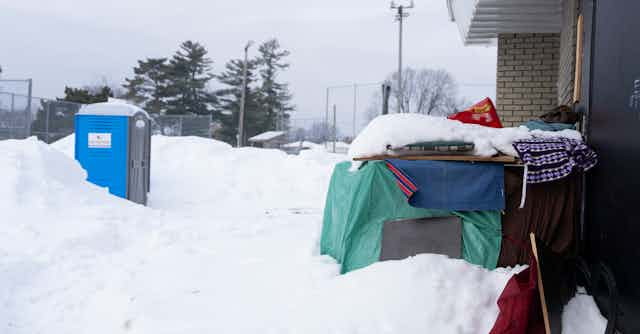Can we do better in Canada to meet the needs of former youth in care?
Young adults across Canada continue to struggle with the high cost of living. Statistics Canada highlights a 20-year trend of Canadians aged 20-34 remaining in their familial home with at least one parent.
In contrast, young adults aging out of government care (those with lived experience in child welfare systems) are expected to rapidly transition to adulthood much earlier, many without the support of their families.

OECD data
While Canada is among 38 member countries of the Organisation for Economic Co-operation and Development (OECD) working toward developing policy standards in relation to economic development, Canada is failing to meet the social, educational and economic realities facing people with lived experience in child welfare systems.
Recent OECD data indicate that people who have had experience in care as children have worse mental health, greater levels of homelessness, higher incarceration rates and higher rates of suicide.
Read more: Health of former youth in care could be bolstered by stronger tuition waiver programs
Collectively, these indicators suggest the need for greater attention to youth leaving care. In particular, we need to do better at evaluating which types of interventions provide for positive long-term effects on youth’s education, mental health and employment after they leave care.
Available data suggest Canada is falling behind other countries in terms of meeting the unique needs of former youth in care.
This has direct implications for the individuals, their communities and the economy, and yet we continue to see a patchwork approach taken by the federal and provincial governments.
Patchwork approaches
Existing aging-out-of-care policies continue to have very real consequences for youth, including barriers to access to education, employment and housing — all of which are key determinants of health.
The consequences of continued inaction will inevitably result in worse health, social, economic and other life outcomes for thousands of people.
These consequences will be felt for generations, with many former youth in care experiencing continued cycles of poverty.
Worse labour market outcomes
We know that many former youth in care have intersecting experiences and identities. Many face adversity or oppression related to class, gender identity, sexual orientation or racism that can limit their life chances and attainment in terms of education, employment and health outcomes.
Former youth in care are more likely to be from groups that have worse educational and labour market outcomes to begin with, and youth who are from Black, Indigenous and 2SLGBTQIA+ populations remain over-represented in care systems.

Perhaps not surprisingly, given these disadvantages and lack of opportunities afforded to youth with experience in care, former youth in care are more likely to be involved in criminal activity, particularly for those placed by agencies in group care settings.
Given that individuals with criminal records, particularly women and Indigenous applicants, can find it almost impossible to find work, this can lead to a life of economic dependence on social welfare services.
Read more: High school dropouts cost countries a staggering amount of money
Quality education?
In terms of Canada’s standing in relation to United Nations Sustainable Development Goals (SDGs), particularly SDG 4 (Quality Education), SDG 1 (no poverty) and SDG 3 (good health and well-being) is also at issue.
The UNSDG data indicates that education is widely regarded as a key factor in mitigating the impacts of experiences in care as well as other related childhood traumas.
Our recently published review of research about barriers to post-secondary education among former youth in care found that more attention is needed in the intersecting system-level factors that impact access to education. These barriers include poverty, as well as adverse health and well-being. Many of these circumstances begin in care, and well before high school or post-secondary studies.
Barriers to post-secondary study
Of the 58 studies that met our inclusion criteria, the majority cite issues of highly variable requirements for funding supports for post-secondary education. These variables include:
- differing provincial and institutional age caps;
- verification processes to determine who is eligible;
- limitations on program duration;
- eligible program types and level of study.
These varied requirements limit financial supports, and can result in financial gaps.

Many studies noted the need for greater attention to how existing policies may inadvertently exclude former youth in care.
A focus on trauma-informed policy approaches, including a greater level of psycho-social supports in higher education, is urgently needed.
As noted in research we covered, once youth age out of care, they are expected to find their way in an adult world that often renders them invisible.
Need to track and monitor youth
To fully understand and address the interconnected and systemic issues facing former youth in care, Canada needs to focus on tracking, monitoring and evaluating the economic, health and social outcomes of these youth. This is the case especially as they transition from government care into adulthood.
As it now stands, Canada’s national statistics agency and most provincial agencies do not provide the longitudinal data needed to systematically track after-care outcomes like education, employment, income and health among people with experience in child welfare systems.
This in turn makes it highly challenging to know which types of policies, programs and supports are truly meeting the needs of former youth in care. It also makes it difficult to know which are helping Canada achieve its commitments to the SDGs and the United Nations Convention on the Rights of the Child.
Sue McWilliam, Trauma Informed Care Research and Evaluation Lead in Mental Health and Addictions at IWK Health co-authored this story.

